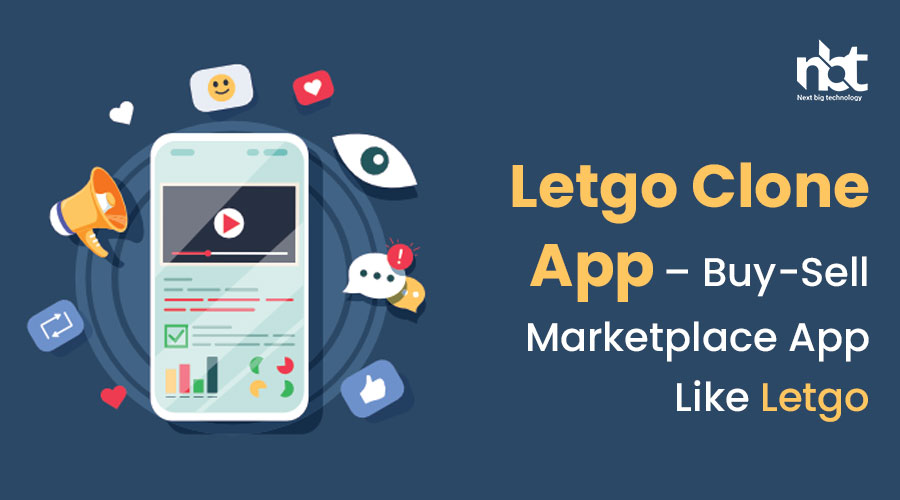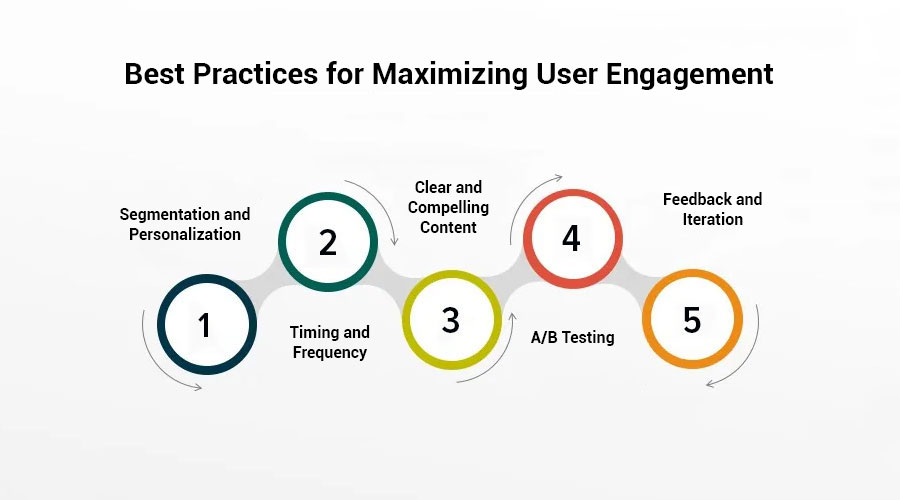Table of Contents
Understanding Mobile App Marketing Landscape
In today’s digitally driven world, mobile apps have become an integral part of our daily lives. From social networking to e-commerce and gaming, there seems to be an app for everything. However, amidst this sea of apps, getting yours noticed and downloaded can be a daunting task. This is where mobile app marketing comes into play.
Understanding the mobile app marketing landscape is crucial for developers and businesses looking to promote their apps effectively. In this comprehensive guide, we’ll delve into the various aspects of mobile app marketing, from strategy formulation to execution and optimization.
Understanding the Mobile App Market: Before diving into marketing strategies, it’s essential to grasp the dynamics of the mobile app market. With millions of apps available across different app stores, competition is fierce. Standing out requires a deep understanding of your target audience, competitors, and market trends. Conducting thorough market research can provide invaluable insights into user preferences, pain points, and emerging opportunities.
Crafting a Winning Strategy: A successful mobile app marketing strategy begins with clearly defined objectives and target metrics. Whether it’s increasing app downloads, user engagement, or revenue generation, setting specific, measurable goals is essential. Moreover, understanding your target audience’s demographics, interests, and behavior is crucial for tailoring your marketing efforts effectively.
App Store Optimization (ASO): App Store Optimization (ASO) plays a pivotal role in improving your app’s visibility and ranking in app store search results. Optimizing elements such as app title, keywords, description, and visuals can significantly impact your app’s discoverability. Additionally, leveraging user reviews and ratings can enhance credibility and trustworthiness, influencing potential users’ decision-making process.
Leveraging Paid Advertising: Paid advertising channels such as social media ads, Google Ads, and in-app advertising offer effective ways to reach your target audience and drive app installs. However, identifying the right platforms, ad formats, and targeting parameters is critical for maximizing ROI. A/B testing different ad creatives, targeting options, and bidding strategies can help optimize campaign performance over time.
Harnessing the Power of Content Marketing: Content marketing can be a powerful tool for building brand awareness, driving organic traffic, and engaging with your audience. Creating high-quality, relevant content such as blog posts, videos, infographics, and user tutorials can attract users to your app and establish your brand as an authority in your niche. Additionally, collaborating with influencers and industry experts can amplify your reach and credibility.
Engaging Users through Retargeting and Remarketing: Retaining existing users and re-engaging lapsed users is essential for maximizing the lifetime value of your app users. Retargeting and remarketing campaigns allow you to reach out to users who have shown interest in your app but haven’t completed the desired action, such as app installation or in-app purchase. Personalized messaging and incentives can incentivize users to revisit your app and take action.
Analyzing and Iterating: Continuous monitoring, analysis, and iteration are key components of a successful mobile app marketing strategy. Tracking key performance indicators (KPIs) such as app installs, user retention, in-app purchases, and revenue can provide valuable insights into the effectiveness of your marketing efforts. By identifying trends, patterns, and areas for improvement, you can refine your strategy and optimize your campaigns for better results.
Setting Clear Objectives for Your Mobile App Marketing Strategy
In today’s digital age, mobile applications have become an integral part of our daily lives. From ordering food to booking a cab, there’s an app for almost everything. However, with millions of apps vying for attention in the app stores, it’s crucial to have a well-defined marketing strategy to ensure your app stands out from the crowd. One of the foundational elements of any successful mobile app marketing strategy is setting clear objectives. In this article, we’ll delve into the importance of setting clear objectives and provide actionable tips to help you craft an effective mobile app marketing strategy.
Why Setting Clear Objectives Matters
Setting clear objectives is like charting a roadmap for your mobile app marketing efforts. It provides direction, focus, and a benchmark for success. Without clear objectives, your marketing efforts may lack cohesion, leading to wasted resources and missed opportunities. Here’s why setting clear objectives is crucial:
- Guides Decision Making: Clear objectives serve as a guidepost for making informed decisions throughout the marketing process. Whether it’s deciding which channels to prioritize, allocating budget resources, or evaluating the success of campaigns, having predefined objectives helps ensure that every decision aligns with your overarching goals.
- Measurable Progress: Clear objectives are quantifiable and measurable, allowing you to track your progress accurately. By defining specific key performance indicators (KPIs) related to your objectives, you can monitor the effectiveness of your marketing initiatives and make adjustments as needed to optimize results.
- Enhances Accountability: When objectives are clearly defined, team members are held accountable for their roles in achieving them. Each member understands their responsibilities and how their contributions contribute to the larger goal, fostering a sense of ownership and commitment.
- Optimizes Resource Allocation: With clear objectives in place, you can allocate your resources more efficiently. Whether it’s budget, time, or manpower, knowing exactly what needs to be accomplished allows you to allocate resources where they will have the most significant impact, maximizing your ROI.
Crafting Clear Objectives for Your Mobile App Marketing Strategy
Now that we understand the importance of setting clear objectives let’s discuss how to craft them effectively for your mobile app marketing strategy:
- Define Your Goals: Start by identifying your overarching goals. What do you hope to achieve with your mobile app marketing efforts? Whether it’s increasing app downloads, improving user engagement, boosting retention rates, or generating revenue, clearly define your primary objectives.
- Make Them Specific and Measurable: Your objectives should be specific and measurable to gauge progress accurately. Instead of setting a vague goal like “increase user engagement,” specify a measurable target, such as “increase daily active users by 20% within six months.”
- Set Realistic Targets: While it’s essential to aim high, ensure that your objectives are realistic and achievable within the given timeframe. Setting unrealistic goals can lead to frustration and demotivation if they’re not met.
- Align with Your Overall Business Strategy: Your mobile app marketing objectives should align with your broader business goals and objectives. Consider how achieving your marketing objectives contributes to the overall success of your business.
- Consider Your Target Audience: Take into account the preferences, behaviors, and needs of your target audience when setting objectives. Tailor your objectives to address specific pain points or challenges faced by your target demographic.
- Prioritize Objectives: Not all objectives are created equal. Prioritize your objectives based on their importance and potential impact on your app’s success. Focus on the objectives that will yield the most significant results and allocate resources accordingly.
- Establish a Timeline: Set a clear timeline for achieving your objectives. Break down larger objectives into smaller, manageable tasks with deadlines to keep your team on track and accountable.
- Regularly Review and Adjust: Your objectives are not set in stone. Regularly review your progress against your objectives and be prepared to adjust them as needed based on evolving market conditions, user feedback, or changes in business priorities.
Identifying Your Target Audience and Market Segmentation
In the ever-evolving landscape of business, one of the most critical elements for success lies in understanding your target audience and effectively segmenting your market. This strategic approach not only sharpens your marketing efforts but also enhances your product development and customer service, ultimately leading to increased profitability and sustained growth.
Understanding Your Target Audience:
Identifying your target audience is akin to laying the foundation of a sturdy building – it provides the necessary support for all your subsequent business endeavors. To do this effectively, you must delve deep into market research, analyzing demographics, psychographics, and behavior patterns. Here’s how to get started:
- Demographics: Begin by defining the basic characteristics of your audience such as age, gender, income level, education, and geographical location. This information forms the backbone of your marketing strategies, helping you tailor your messaging to resonate with specific groups.
- Psychographics: Move beyond the surface-level demographics and explore the attitudes, values, lifestyles, and interests of your audience. Understanding what drives their decisions and behaviors allows you to create more targeted and impactful campaigns.
- Behavioral Analysis: Track the online and offline behaviors of your audience – from their browsing habits to purchase history. This data unveils invaluable insights into their preferences, enabling you to personalize your offerings and enhance customer experience.
Market Segmentation:
Once you’ve gained a comprehensive understanding of your target audience, the next step is to segment the market accordingly. Market segmentation involves dividing your audience into distinct groups based on shared characteristics, needs, or preferences. Here’s why it’s crucial:
- Customized Marketing Strategies: Different segments of your audience may respond differently to various marketing tactics. By segmenting your market, you can tailor your campaigns to address the unique needs and preferences of each group, maximizing engagement and conversion rates.
- Product Development: Market segmentation guides product development by highlighting specific features or enhancements desired by different segments. This customer-centric approach ensures that your offerings align closely with market demands, fostering loyalty and satisfaction.
- Resource Optimization: Allocating resources effectively is essential for maximizing ROI. Market segmentation allows you to prioritize high-value segments and allocate resources where they yield the greatest impact, optimizing your marketing budget and efforts.
Implementation Strategies:
Implementing effective audience identification and market segmentation strategies requires a systematic approach:
- Data-Driven Insights: Leverage advanced analytics tools and customer relationship management (CRM) systems to gather and analyze data effectively. Harness the power of AI and machine learning algorithms to uncover hidden patterns and trends within your audience.
- Continuous Refinement: Market dynamics are ever-changing, necessitating continuous refinement of your segmentation strategies. Regularly reassess your audience profiles and market segments to ensure alignment with evolving trends and consumer preferences.
- Integration Across Channels: Seamless integration of segmentation strategies across all marketing channels is key to delivering a cohesive and personalized experience to your audience. Ensure consistency in messaging and targeting across online and offline touchpoints.
Crafting Compelling App Store Optimization (ASO) Strategies
In today’s competitive digital landscape, having a stellar app is just half the battle won. With millions of apps vying for attention in various app stores, it’s crucial to ensure that your app stands out amidst the crowd. This is where App Store Optimization (ASO) comes into play. Crafting compelling ASO strategies is not only about getting more downloads but also about attracting the right audience and ensuring long-term success for your app. In this comprehensive guide, we’ll delve into the key components of crafting effective ASO strategies.
Understanding the Basics of ASO:
Before diving into the strategies, let’s grasp the fundamentals of ASO. ASO involves optimizing various elements of your app’s listing to improve its visibility and discoverability in the app store search results. The primary goal is to increase organic downloads by enhancing the app’s ranking for relevant keywords and appealing to users browsing the app store.
Key Components of Effective ASO Strategies:
- Keyword Optimization:
- Conduct thorough keyword research to identify relevant keywords that your target audience is likely to use when searching for apps similar to yours.
- Incorporate these keywords strategically in your app’s title, subtitle, description, and keyword field to improve its visibility in search results.
- Regularly monitor and update your keyword strategy based on changes in user behavior and market trends.
- Compelling App Title and Description:
- Craft a catchy and descriptive title that not only includes relevant keywords but also grabs the attention of potential users.
- Write a compelling app description that clearly communicates the value proposition of your app, its features, and benefits.
- Use bullet points and concise language to highlight key features and benefits, making it easier for users to understand what your app offers.
- Eye-catching App Icon and Screenshots:
- Design an eye-catching app icon that reflects your brand identity and entices users to click on your app.
- Showcase the best features of your app through high-quality screenshots that demonstrate its functionality and user interface.
- A/B test different variations of app icons and screenshots to identify which ones resonate best with your target audience.
- Optimized App Ratings and Reviews:
- Encourage satisfied users to leave positive reviews and ratings for your app by implementing in-app prompts and incentives.
- Respond promptly to user feedback and address any issues or concerns raised in reviews to maintain a positive reputation.
- Monitor and analyze app ratings and reviews regularly to identify areas for improvement and prioritize updates accordingly.
- Localization and Regional Optimization:
- Tailor your ASO strategies to different regions and languages by localizing your app’s metadata, including title, description, and keywords.
- Conduct market research to understand cultural preferences and nuances that may impact the success of your app in specific regions.
- Leverage localization tools and services to streamline the process of translating and optimizing your app for different markets.
- Continuous Monitoring and Optimization:
- Regularly monitor key performance metrics such as app store rankings, download numbers, and user engagement metrics.
- Use A/B testing to experiment with different ASO strategies and measure their impact on app performance.
- Stay updated on the latest trends and best practices in ASO to adapt your strategies accordingly and stay ahead of the competition.
Leveraging Social Media for Mobile App Promotion
In today’s digital era, mobile applications have become an integral part of our lives, catering to various needs from entertainment to productivity. However, with millions of apps available across different platforms, standing out in the crowd has become a challenging task for app developers. This is where leveraging social media for mobile app promotion comes into play, offering a powerful toolkit to reach and engage with your target audience effectively.
Understanding the Power of Social Media
Social media platforms such as Facebook, Instagram, Twitter, LinkedIn, and TikTok have billions of active users worldwide. These platforms provide a vast landscape for app developers to showcase their products and connect with potential users. Leveraging social media allows developers to create a buzz around their app, generate user interest, and drive downloads.
Crafting a Compelling Social Media Strategy
To effectively leverage social media for mobile app promotion, developers need to craft a well-defined strategy tailored to their target audience and app niche. Here are some key steps to consider:
1. Identify Your Target Audience: Understanding your target demographic is crucial for crafting relevant and engaging content. Analyze the demographics and behavior of your potential users to tailor your messaging accordingly.
2. Choose the Right Platforms: Not all social media platforms are created equal. Select the platforms that align with your target audience demographics and app niche. For instance, Instagram and TikTok are popular among younger demographics, while LinkedIn may be more suitable for B2B apps.
3. Create Engaging Content: Content is king in the world of social media. Develop visually appealing and informative content that highlights the features and benefits of your app. Incorporate images, videos, infographics, and user testimonials to capture audience attention.
4. Utilize Paid Advertising: Social media advertising offers precise targeting options to reach your desired audience. Allocate a portion of your marketing budget to run targeted ads on social media platforms, ensuring maximum exposure for your app.
5. Engage with Your Audience: Social media is not just about broadcasting your message; it’s also about building relationships. Respond to user comments, address inquiries, and actively engage with your audience to foster a sense of community around your app.
Leveraging Influencer Marketing
Influencer marketing has emerged as a powerful tool for app promotion on social media. Collaborating with influencers who have a significant following in your app’s niche can help amplify your reach and credibility. Identify relevant influencers and partner with them to create authentic content that resonates with their audience.
Measuring Success and Iterating
Monitoring the performance of your social media campaigns is essential for optimizing your strategy and maximizing results. Track key metrics such as engagement, click-through rates, and app downloads to gauge the effectiveness of your efforts. Use this data to identify what’s working well and areas for improvement, then iterate your strategy accordingly.
Harnessing the Power of Influencer Marketing for App Promotion
In today’s digital landscape, where attention spans are shorter than ever and competition is fierce, getting your app noticed among the sea of options can be a daunting task. Traditional marketing strategies alone may not suffice in garnering the traction needed to propel your app to success. This is where influencer marketing emerges as a potent tool, offering a unique avenue to reach and engage with your target audience in a more authentic and compelling manner.
Understanding Influencer Marketing
At its core, influencer marketing revolves around collaborating with individuals who have a significant following and influence within your app’s niche or industry. These influencers, through their credibility, authenticity, and rapport with their audience, possess the power to sway opinions, spark interest, and drive actions.
Why Influencer Marketing Works for App Promotion
- Targeted Reach: Influencers have already cultivated a community that aligns with your app’s target demographic. By partnering with relevant influencers, you can tap into their existing follower base, ensuring that your app is being showcased to individuals who are more likely to be interested in its offerings.
- Authenticity: Unlike traditional advertisements that may come off as overtly promotional, influencer content is often perceived as more authentic and genuine. When influencers share their experiences with your app or endorse its features, it carries more weight and credibility, resonating better with their audience.
- Engagement and Trust: Influencers have built trust and rapport with their followers over time. When they recommend or endorse your app, it fosters a sense of trust and credibility among their audience, leading to higher engagement levels and increased likelihood of app downloads.
- Creative Content: Influencers are adept at creating engaging and creative content that captivates their audience’s attention. By entrusting them to craft content around your app, you can leverage their creativity and storytelling skills to showcase your app’s unique value proposition in a more compelling manner.
Key Strategies for Harnessing Influencer Marketing for App Promotion
- Identify the Right Influencers: Look for influencers whose audience demographics closely match your target audience. Assess their engagement rates, content quality, and authenticity to ensure alignment with your brand values.
- Build Genuine Relationships: Invest time in building genuine relationships with influencers. Engage with their content, reach out personally, and establish a rapport before pitching your app collaboration. Authentic relationships lay the foundation for fruitful partnerships.
- Craft Compelling Campaigns: Work collaboratively with influencers to develop creative and engaging campaigns that resonate with their audience while effectively highlighting your app’s key features and benefits.
- Track and Measure Performance: Utilize analytics tools to track the performance of your influencer campaigns. Monitor key metrics such as app downloads, website traffic, and engagement rates to evaluate the effectiveness of your efforts and make data-driven optimizations.
Case Studies: Successful Examples of App Promotion Through Influencer Marketing
- Calm: The meditation and relaxation app Calm partnered with influencers like actress Jameela Jamil and athlete LeBron James to promote its app, leveraging their influence to reach broader audiences and drive app downloads.
- Duolingo: Language-learning app Duolingo collaborated with influencers across various social media platforms to create engaging content that showcased the app’s features and benefits, resulting in increased brand awareness and app downloads.
Exploring Paid Advertising Channels: Strategies and Best Practices
In the vast realm of digital marketing, paid advertising stands as a formidable tool for businesses seeking to amplify their online presence and drive conversions. With a plethora of channels available, from social media platforms to search engines and beyond, exploring paid advertising channels requires a strategic approach tailored to the unique needs of each business. In this article, we delve into the strategies and best practices that can help businesses navigate this dynamic landscape effectively.
Understanding the Landscape: Before diving into specific strategies, it’s crucial to grasp the diverse array of paid advertising channels available. From Google Ads and Facebook Ads to LinkedIn, Twitter, Instagram, and beyond, each platform offers its own strengths and demographics. Understanding the audience demographics, user behavior, and advertising formats of each platform is essential for crafting targeted campaigns that yield optimal results.
Setting Clear Objectives: The foundation of any successful paid advertising campaign lies in setting clear and measurable objectives. Whether the goal is to drive website traffic, increase sales, generate leads, or boost brand awareness, defining specific KPIs (Key Performance Indicators) allows businesses to track the effectiveness of their campaigns and make data-driven decisions.
Targeting the Right Audience: Effective targeting lies at the heart of successful paid advertising campaigns. Leveraging the advanced targeting options offered by platforms like Facebook Ads and Google Ads enables businesses to reach their ideal audience based on demographics, interests, behaviors, and even specific keywords. By narrowing down the target audience, businesses can ensure that their ads are seen by the most relevant prospects, thus maximizing the ROI of their campaigns.
Crafting Compelling Ad Copy and Creative: In a digital landscape inundated with advertisements, capturing the attention of potential customers requires compelling ad copy and creative elements. Whether it’s a catchy headline, engaging visuals, or a compelling call-to-action, every element of the ad should be meticulously crafted to resonate with the target audience and compel them to take action.
Optimizing Landing Pages: Driving traffic to your website is only half the battle; ensuring that visitors convert into customers requires optimized landing pages. From clear and concise messaging to intuitive design and seamless navigation, every aspect of the landing page should be geared towards guiding visitors towards the desired action, whether it’s making a purchase, filling out a form, or subscribing to a newsletter.
Monitoring and Iterating: The digital landscape is constantly evolving, and what works today may not yield the same results tomorrow. Continuous monitoring and iteration are therefore essential for optimizing the performance of paid advertising campaigns. By analyzing key metrics such as click-through rates, conversion rates, and cost per acquisition, businesses can identify areas for improvement and refine their strategies accordingly.
Maximizing User Engagement through Push Notifications and In-App Messaging
In today’s digital age, user engagement stands as the cornerstone of any successful online platform or application. Whether it’s a mobile app, a website, or an e-commerce store, captivating and retaining user attention is paramount. Amidst the plethora of strategies available, push notifications and in-app messaging emerge as potent tools to maximize user engagement and drive meaningful interactions.
Understanding Push Notifications
Push notifications have revolutionized the way businesses communicate with their audience. These bite-sized messages pop up on users’ devices, serving as direct invitations to engage with an app or website. From announcing new features to delivering personalized offers, push notifications offer immense versatility in reaching out to users in real-time.
Crafting compelling push notifications requires a delicate balance between relevance and frequency. Users appreciate timely updates and personalized content but can quickly become disengaged if bombarded with irrelevant messages. Leveraging user data and behavior analytics empowers businesses to tailor notifications according to individual preferences, thereby enhancing their effectiveness.
Harnessing the Potential of In-App Messaging
While push notifications grab users’ attention from afar, in-app messaging provides a more immersive engagement experience within the application itself. Unlike push notifications, which aim to entice users back into the app, in-app messages engage users who are already active, enriching their experience and guiding them through various features or actions.
In-app messages serve multiple purposes, from onboarding new users to highlighting product features and offering customer support. By delivering targeted and contextual messages at the right moment, businesses can nudge users towards desired actions, such as making a purchase, completing a profile, or exploring additional content.
Best Practices for Maximizing User Engagement
To unlock the full potential of push notifications and in-app messaging, businesses must adhere to best practices tailored to their audience and objectives:
- Segmentation and Personalization: Divide users into segments based on demographics, behavior, or preferences, and tailor messages accordingly to increase relevance and resonance.
- Timing and Frequency: Respect users’ time and avoid overwhelming them with excessive notifications. Optimize timing based on user activity patterns to ensure messages are received at opportune moments.
- Clear and Compelling Content: Craft concise, action-oriented messages that clearly communicate value propositions and encourage users to take specific actions.
- A/B Testing: Continuously experiment with different messaging strategies, visuals, and calls-to-action to identify what resonates best with your audience and drives higher engagement rates.
- Feedback and Iteration: Monitor user responses, gather feedback, and iterate on messaging strategies to continually refine and improve the user experience.














